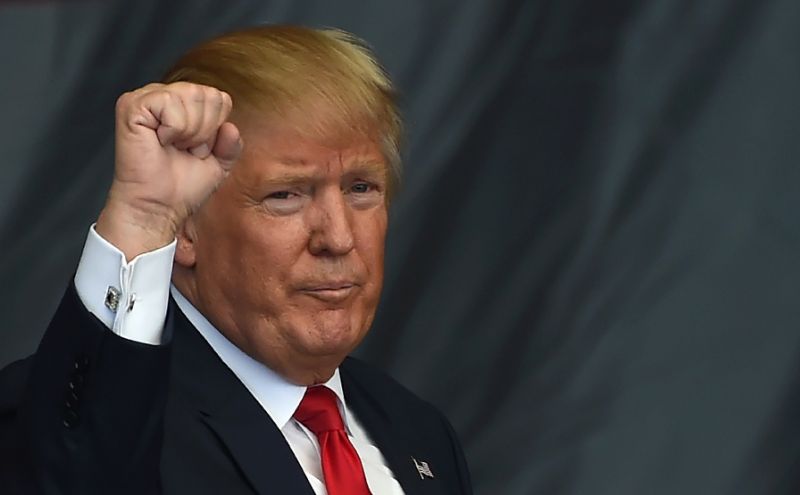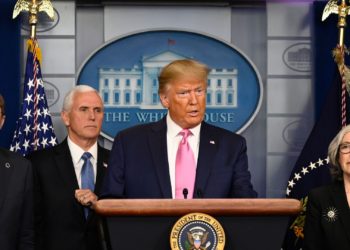Now that the 2018 midterms are over, political pundits have immediately shifted attention to the 2020 presidential election.
The key to victory for both Republicans and Democrats may lie in three critical swing states: Wisconsin, Michigan, and Pennsylvania.
Although Donald Trump lost the popular vote in 2016 by nearly 3 million votes, his victories in these three states helped him secure the necessary 270 electoral votes to win the presidency over Hillary Clinton.
Clinton’s inability to win Midwestern states like Michigan, which she lost by less than 12,000 votes, proved to be her downfall. The last time a Republican presidential candidate won Michigan was George H.W. Bush in 1988.
Winning these three states would have put Clinton at 278 electoral votes compared to Donald Trump’s 260.
William Galston, a senior fellow at the Brookings Institute and former deputy assistant of domestic policy for President Bill Clinton, believes that Hillary’s biggest mistake in 2016 was not focusing enough resources in the Midwest.
“The Midwest is the cake, Florida is the frosting,” Galston said at a panel discussion at the Brookings Institute last week.
While he said Democrats shouldn’t completely abandon making inroads in sun-belt states like Florida and Georgia, winning in the Midwest is more realistic and thus more important.
Tuesday’s midterm results may worry Republicans eager to eat more cake in 2020.
All three Midwestern states held gubernatorial elections, which were all won by Democrats (Tony Evers in Wisconsin, Gretchen Whitmer in Michigan and Tom Wolf in Pennsylvania).
In Wisconsin, Democrats won every statewide election, while Evers managed to flip five counties that voted for Trump in 2016.
Evers’ opponent, Republican incumbent Scott Walker, had aligned himself closely with the President by running on an anti-union, pro-corporate platform.
Walker’s loss is a blow to Republicans who were hoping to keep a key swing state red, especially with redistricting on the horizon in 2020.
Senior White House officials, such as Kellyanne Conway, tried to downplay the results and called the midterms a “tremendous success.”
However, some experts disagree with Conway’s assessment.
Meredith Conroy, an associate professor of political science at California State University San Bernardino, told The Globe Post midterm races “can be useful signals to the Democratic and Republican parties for whether certain states might be competitive in 2020.”
While the Republicans were able to expand their majority in the Senate, the results in the midterm races reveal another fundamental problem for Trump heading into 2020: suburban voters seem to be abandoning the GOP.
Suburban voters are critical because over 40 percent of the U.S. House of Representatives is made up of suburban districts.
An analysis conducted by USA Today found that more than 80 suburban counties across the country voted more Democratic in 2018 compared to 2016.
This includes important swing counties like Kenosha County in Wisconsin and Macomb County in Michigan, which all voted for Trump in 2016 but flipped to Democrats in the 2018 elections.
In Michigan, Whitmer was able to hold eight counties won by Clinton in 2016, while turning nine counties from red to blue.
“The base of so many Republican victories in the past, with a strong Republican vote out of suburbia, at this point looks to be a thing of the past,” Whit Ayres, a Republican pollster, told The Wall Street Journal.
These trends don’t guarantee a Democratic victory in 2020. Exit polls show that Republicans still maintain a healthy lead in rural areas, particularly amongst non-college educated whites.
Centrist Democrats in rural America such as Senators Joe Donnelly in Indiana and Claire McCaskill in Missouri were handily defeated.
Anthony Fowler, an associate professor at the Harris School of Public Policy at the University of Chicago, told The Globe Post that while some voters, particularly women, may have been turned off by Trump’s behavior, “Most voters care a lot more about taxes, jobs, economic growth, etc. than they care about personal shortcomings.”
Fowler concluded that “white, working-class voters in industrial states” like Wisconsin, Michigan, and Pennsylvania who voted for Obama in 2012 but turned to Trump in 2016, “will be important again” in 2020.























